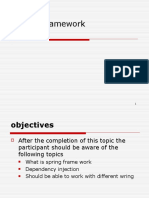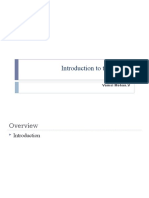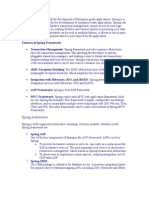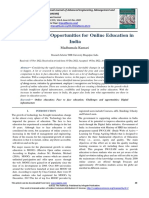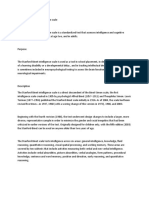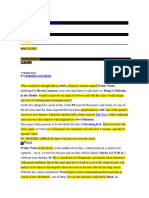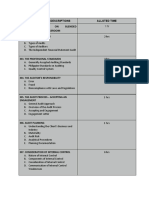Introduction to the Spring Framework
University of Kansas January 2009 This presentation and example application are available at http://www.brucephillips.name/spring
�References
Spring documentation http://www.springsource.org/documentation Spring API http://static.springframework.org/spring/docs/2.5.x/api/ index.html Introduction to the Spring Framework 2.5, by Rod Johnson (Originator of Spring) http://www.theserverside.com/tt/articles/article.tss?l=In trotoSpring25 Spring in Action, 2nd Edition, Manning Publishing, August 2007 Pro Spring 2.5, Apress Publishing, August 2008 Maven - http://maven.apache.org/ Maven - http://books.sonatype.com/mavenbook/index.html
�What is Spring?
A Container
Creates objects and makes them available to your application
A Framework
Provides an infrastructure of classes that make it easier to accomplish tasks
�The Spring Framework
Official 1.0 release in 2004 Current release (January 2009) is 2.5.6
See: http://www.springsource.org/download
Works with Java 1.4 or 1.5 or 1.6 and J2EE 1.3 and Java EE 5
See: http://static.springframework.org/spring/docs/2.5.x /reference/new-in-2.html
�What does Spring provide?
Lightweight container and framework
Most of your code will be unaware of the Spring framework Use only the parts you of Spring you want
Manages dependencies between your objects
Encourages use of interfaces Lessens coupling between objects
Cleaner separation of responsibilities
Put logic that applies to many objects in one single place Separate the classs core responsibility from other duties
Simplifies database integration
Spring JDBC Hibernate iBATIS Java Persistence
�Spring Modules Use What You Want
See: http://static.springframework.org/spring/docs/2.5.x/reference/introduction.html#introduction-overview
�Example Application
Contacts store and retrieve contacts
Created using MyEclipse 7 Uses Maven 2 to manage libraries Demonstrates basic Spring capabilities
Contact has a Person, collection of Email, and collection of Phone objects Can use an XML file or database as repository User interface is via the console See READ_ME file under project folder
�Dependency Management
Manage collaboration (dependencies) between Plain Old Java Objects (POJOs)
Code to interfaces Use Spring to instantiate specific interface implementations
Dont need
InterfaceType anObject = new ClassThatImplementsInterfaceType()
Use Spring to provide specific interface implementations to your objects
�External Configuration
Configuration options
Properties files XML configuration files Annotations
XML Configuration
Specify the creation of objects Specify the dependencies between objects
�Handling Change
Change dependencies without changing code
Edit the configuration file Create multiple configuration files
�Testing Applications
Easier to test
Use a test configuration file to create test objects and manage their dependencies
Reuse objects across tests
Test service layer objects by creating stub dependent objects See: http://static.springframework.org/spring/docs/2.5.x /reference/testing.html
�Separation of Responsibilities
Aspect-Oriented Programming (AOP)
http://www.javaworld.com/javaworld/jw-012002/jw-0118-aspect.html
Aspect-Oriented Programming in Spring
See: http://static.springframework.org/spring/docs/2.5.x /reference/aop.html
Put a concern (logic) that applies to many different objects in one single place
Logging, security, performance testing, transaction management
�Implementing AOP in Spring
Advice
Several different ways to configure Advice objects
Implement interfaces and XML configuration Use @AspectJ annotations Integrate with AspectJ
Advice is commonly applied to a method Different ways to apply advice to an object
Before advice After returning advice After throwing advice After advice Around advice
�Database Integration
Spring provides a JDBC framework that removes much of the boiler-plate code
See: http://static.springframework.org/spring/docs/2.5.x/reference/jd bc.html Configures the data source Gets the connection Creates the statement Processes the result Creates the business objects Handles exceptions Closes connection
Spring can integrate with Hibernate, Java Data Objects (JDO), Java Persistence API (JPA), iBATIS, and other Object Relational Management (ORM) technologies
�Spring JDBC
Spring JDBC framework takes advantage of Java 5
New classes in Spring 2.0 and 2.5 that use
Variable arguments Auto boxing Covariant return types Generics
Can still use older classes and Java 1.4
�Spring JDBC Capabilities
Simplified methods for querying and updating tables
Query to create a business object http://static.springframework.org/spring/docs/2.5.x /reference/jdbc.html#jdbc-SimpleJdbcTemplate Query for single value http://static.springframework.org/spring/docs/2.5.x /reference/jdbc.html#jdbc-statements-querying Insert business objects http://static.springframework.org/spring/docs/2.5.x /reference/jdbc.html#jdbc-simple-jdbc-insert-1
�Example - Contacts Application
Data source is configured and provided to other classes in the configuration file See classes ContactSearchService_DB and ContactDataAccess_DB
Extend Springs SimpleJdbcDaoSupport See: http://static.springframework.org/spring/docs/2.5.x/api/org/sp ringframework/jdbc/core/simple/SimpleJdbcDaoSupport.htm l
�Additional Spring Capabilities
Transaction Management
A transaction defines a logical unit of work that either completely succeeds or produces no result at all. A distributed transaction is simply a transaction that accesses and updates data on two or more networked resources, and therefore must be coordinated among those resources. see: http://archive.devx.com/java/free/articles/dd_jta/jta-1.asp
Email Scheduling Web services and remoting Spring Web Model View Controller (MVC) Integration with Struts 2
see: http://static.springframework.org/spring/docs/2.5.x/reference/we b-integration.html#struts and http://struts.apache.org/2.x/docs/spring-plugin.html
�Where to Learn More
Review the Spring documentation online
Spring documentation http://www.springsource.org/documentation Spring API http://static.springframework.org/spring/docs/2.5.x /api/index.html
Spring support forum Review on Safari (KU Library)
Spring in Action, 2nd Edition, Manning Publishing, August 2007 Pro Spring 2.5, Apress Publishing, August 2008




































